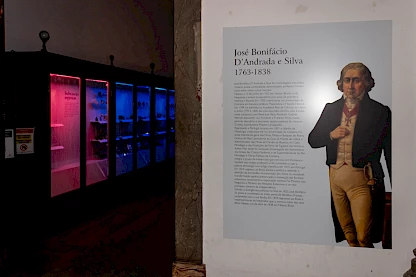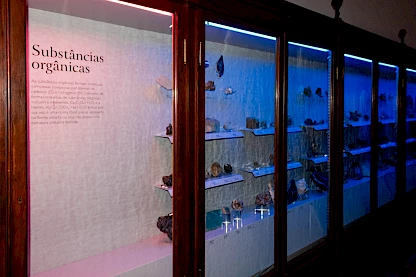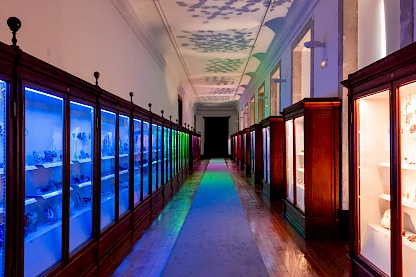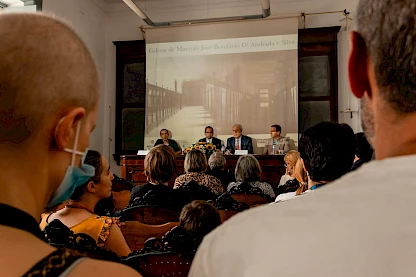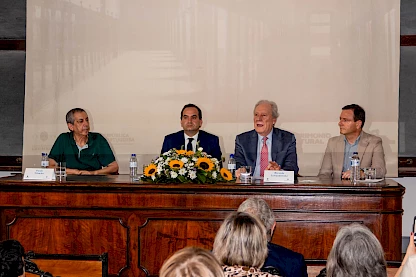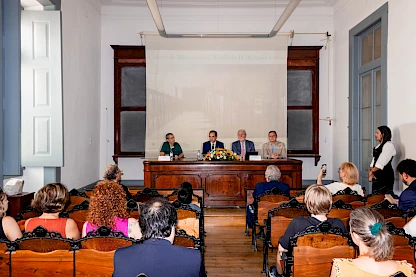Celebrating Science and shared Heritage: José Bonifácio d’Andrada e Silva Mineral Gallery reopens
The renovated gallery was officially reopened on 30 June at the University of Coimbra’s Science Museum, with Brazil’s Minister of Justice and Public Security, Ricardo Lewandowski, attending the ceremony.
The José Bonifácio d’Andrada e Silva Mineral Gallery, located at UC’s Colégio de Jesus, has been refurbished to preserve its museum heritage dating back to the 18th century while offering a contemporary perspective.
Paulo Trincão, director of the Science Museum of the University of Coimbra, described the renovation as giving “a new soul” to the gallery. While respecting original elements, the display now includes crystal systems that enhance visitors’ understanding. A highlight is the andradite mineral, named after José Bonifácio d’Andrada e Silva himself — “not particularly beautiful, but rare and significant as our patron’s mineral,” Trincão noted.
Brazil’s Minister Ricardo Lewandowski opened the ceremony by recalling José Bonifácio d’Andrada e Silva’s intellectual role in founding modern Brazil. He remarked that, while known as the “Patriarch of Independence,” his mineralogical background is less recognised. This scientific training, Lewandowski argued, shaped Brazil’s rational, Enlightenment-inspired state administration.
UC Vice-Rector for External Relations and Alumni, João Nuno Calvão da Silva, described the event as more than a reopening — it symbolises the historic bond between Portugal and Brazil. He noted Coimbra’s long-standing status as the sole university in the Lusophone world and its continuing role as the “Alma mater of the Portuguese language,” which he said was key to Brazil’s unity.
Delfim Leão, Vice-Rector for Culture, Communication and Open Science, praised the balance between tradition and modernity achieved by the gallery, adding that “the warmth of the day is nothing compared to the warmth uniting our Portuguese and Brazilian communities.”
Supported by the ProMuseus programme, the renovation involved restoring display cases, lighting and information panels, with the gallery remaining open throughout. The collection remains one of Portugal’s richest mineralogical holdings, now renewed with a spirit of Portuguese-Brazilian dialogue.

